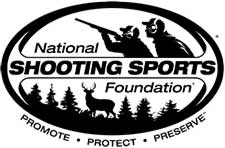By Larry Keane


NEWTOWN, Conn –-(Ammoland.com)- California’s Assembly Bill 711 provides the latest crucible in the seemingly endless debate over traditional ammunition.
The bill would ban traditional ammunition containing lead components for use in all hunting statewide.
Organizations like the Humane Society U.S. claim that this bill is an attempt to protect the wildlife population from ingesting fragments of lead that may be found in traditional ammunition. However there is no sound science to justify these claims of harm, so hunters and sportsmen across the state oppose this far-reaching legislation.
Most of the attention with this bill has gone to the California condor, a species that is slowly being repopulated into the wild in its historic range. Unfortunately, news reports of problems with the condor ignore the fact that the use of lead ammunition has already been banned in areas where the condor resides, yet the species still is having health problems.
At the same time, a traditional ammunition ban threatens to ban hunting in California simply because alternative ammunition is not widely available. One of the reasons for that scarcity resides in Washington. ( See Environmental Extremists + ATF = Total Ammunition Ban ).
The Bureau of Alcohol, Tobacco, Firearms and Explosives (ATF) has said that non-lead hunting rifle ammunition may fall under the definition of “armor piercing ammunition,” (18 USC 921 (17)(B)(ii)), which is illegal to import, make and sell unless the ATF determines it is exempt because it is “primarily intended to be used for a sporting purpose.” For two years now, ATF has not been approving exemptions from the ban, and so if the bill is enacted, sportsmen could face empty shelves of ammunition when hunting season comes along. U.S. Sen. John McCain addressed this issue recently in a letter to the ATF.
Meanwhile, a ban on lead ammunition threatens far more than sportsmen. A soon to be released study by the U.S. Department of Agriculture Forest Service’s Rocky Mountain Research Station and National Technology suggests that copper and steel bullets are far more likely to cause wildfires than lead.
Perhaps ironically, sales of traditional ammunition actually bolster wildlife conservation efforts. The federal excise tax dollars raised from the purchase by hunters of the very ammunition anti-hunting supporters of AB 711 demonize is the single largest source of wildlife conservation funding in the United States.
In 2012, California was one of the top five state-level beneficiaries in the nation, receiving about $14.1 million from federal money marked for wildlife restoration. In the past, these monies have gone toward efforts in California to reestablish Tule elk habitat and protect more than 285,000 acres of wildlife.
Nationally, the bald eagle’s recovery, a truly great conservation success story, was made possible and funded by hunters using traditional ammunition. In fact, recent statistics from the United States Fish and Wildlife Service show that from 1981 to 2006 the number of breeding pairs of bald eagles in the United States increased 724 percent. The bald eagle is no longer listed as an endangered species and raptor populations throughout the United States are soaring. Raptor and other wildlife populations have steadily increased while hunting license sales have increased by 9% during the past 5 years.
With no conclusive science to prove that traditional ammunition is adversely impacting wildlife populations, and mindful of the significant contributions that the sale of traditional ammunition makes to wildlife conservation, Californians should join 24 national hunting and sport shooting organizations and oppose AB 711.
The bill would open up a Pandora’s Box of problems that would threaten the rights of hunters and shooters statewide, not to mention the impact from another law that is always in effect – the law of unintended consequences.
Larry Keane is senior vice president and general counsel for the National Shooting Sports Foundation. Follow him on Twitter at @lkeane.
About NSSFThe National Shooting Sports Foundation is the trade association for the firearms industry. Its mission is to promote, protect and preserve hunting and the shooting sports. Formed in 1961, NSSF has a membership of more than 6,000 manufacturers, distributors, firearms retailers, shooting ranges, sportsmen’s organizations and publishers. For more information, log on to www.nssf.org.
